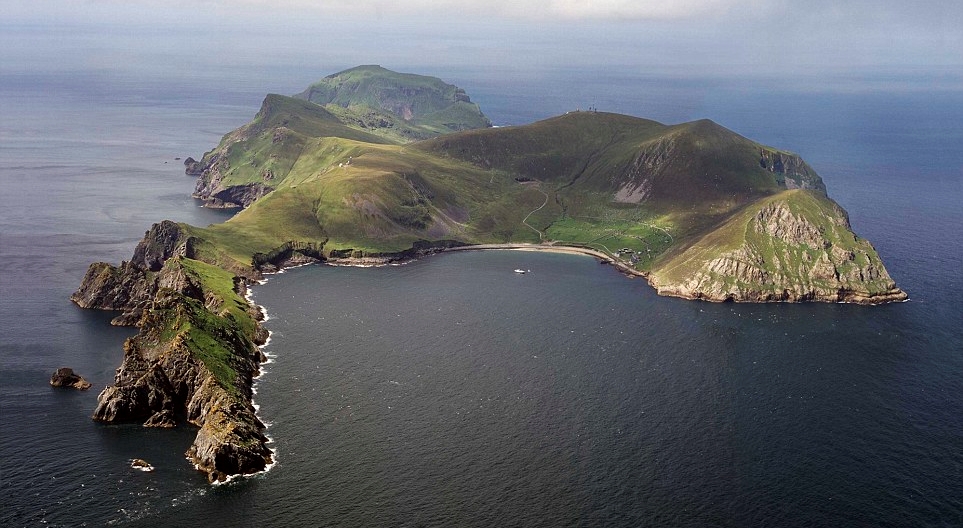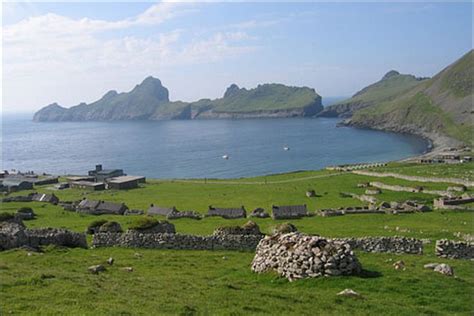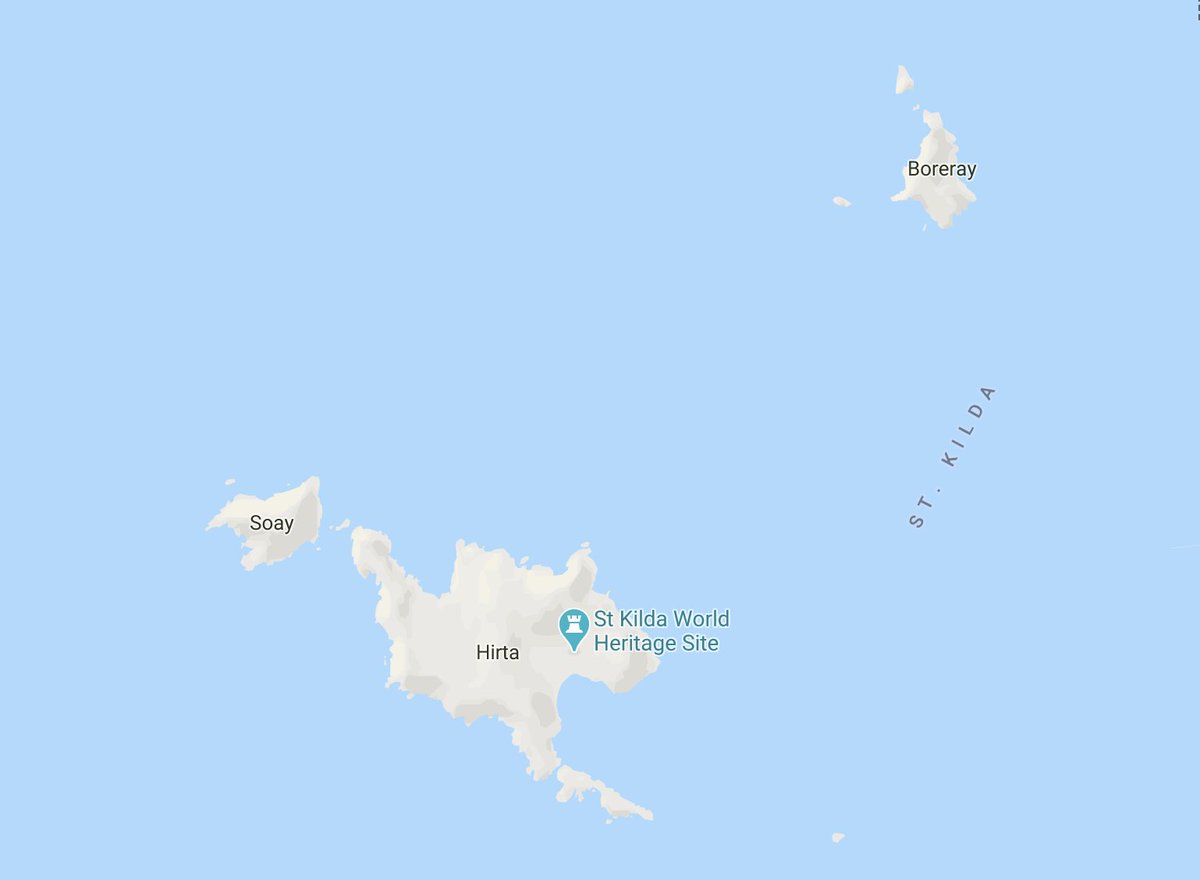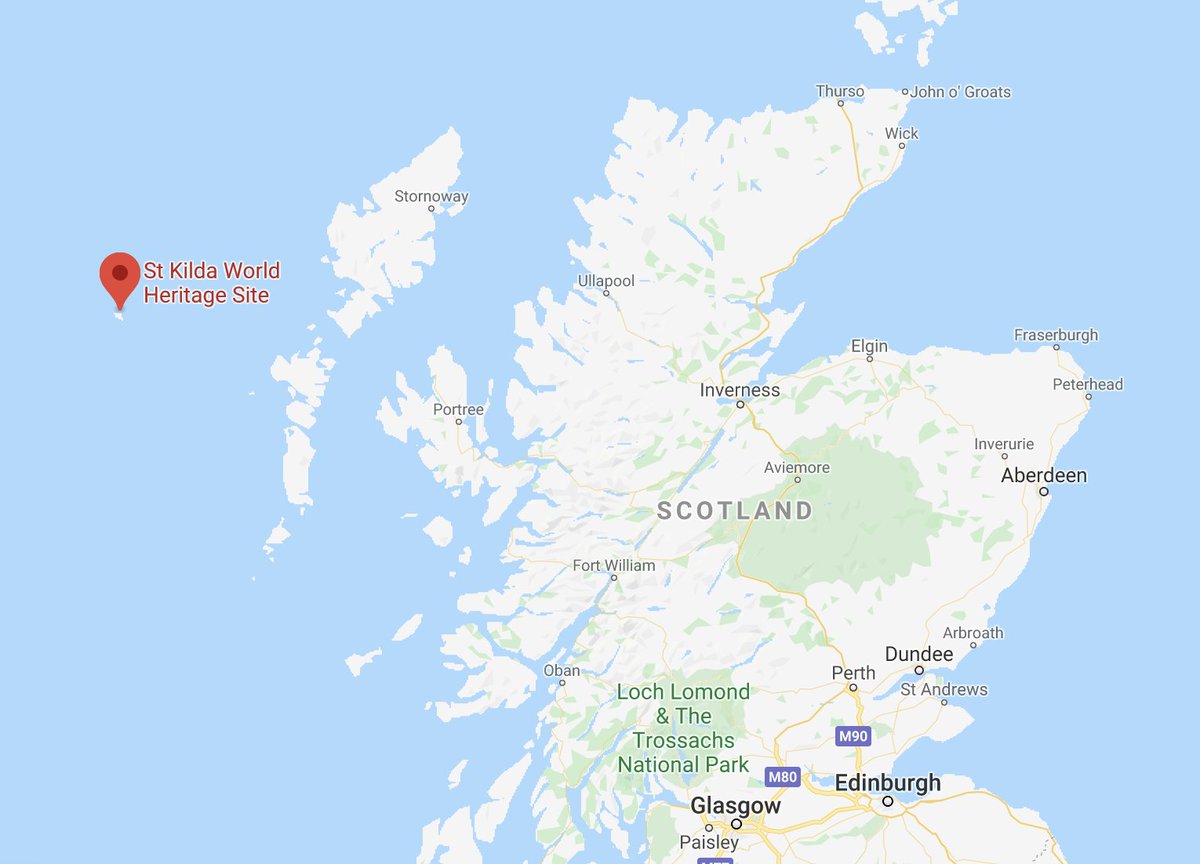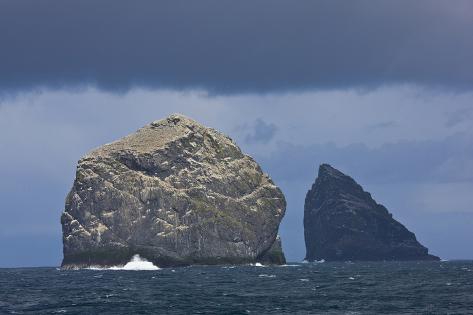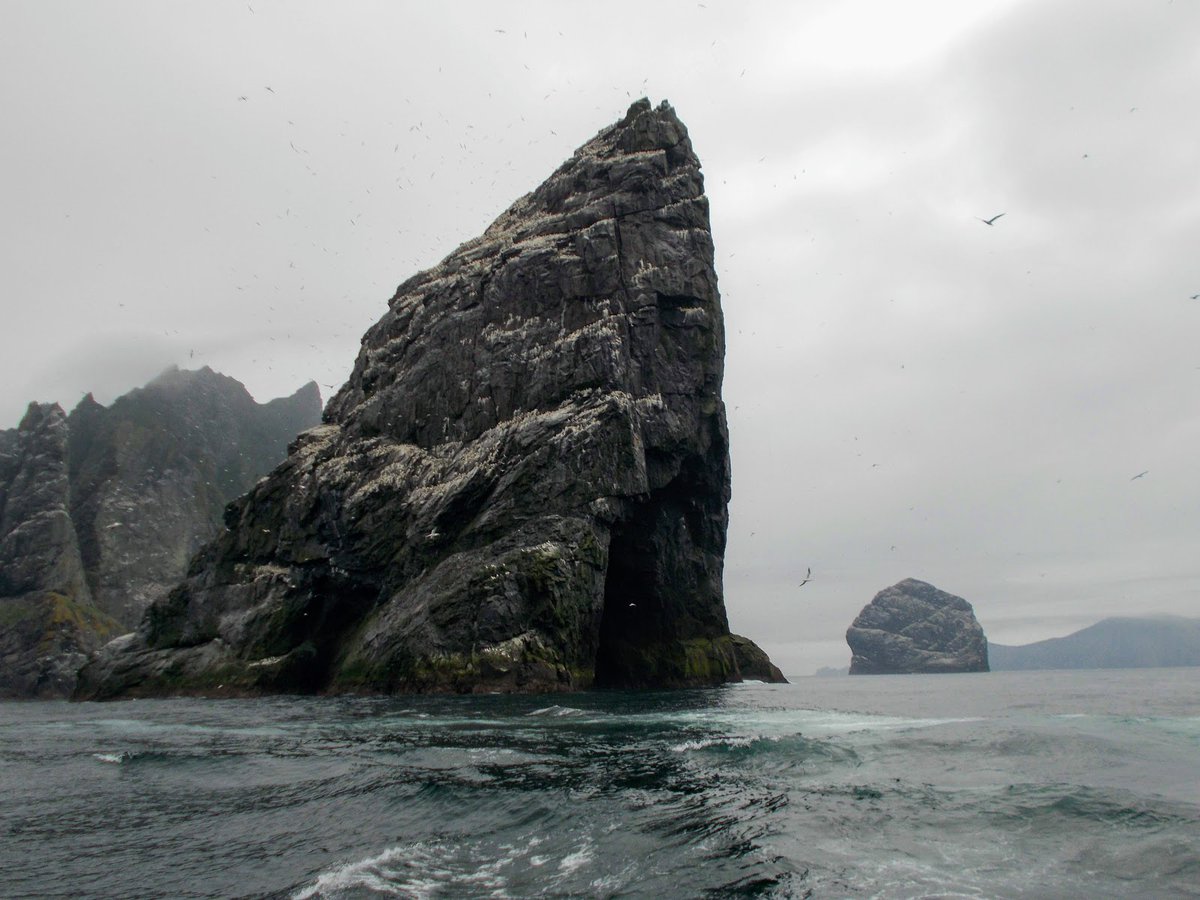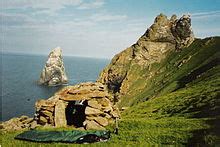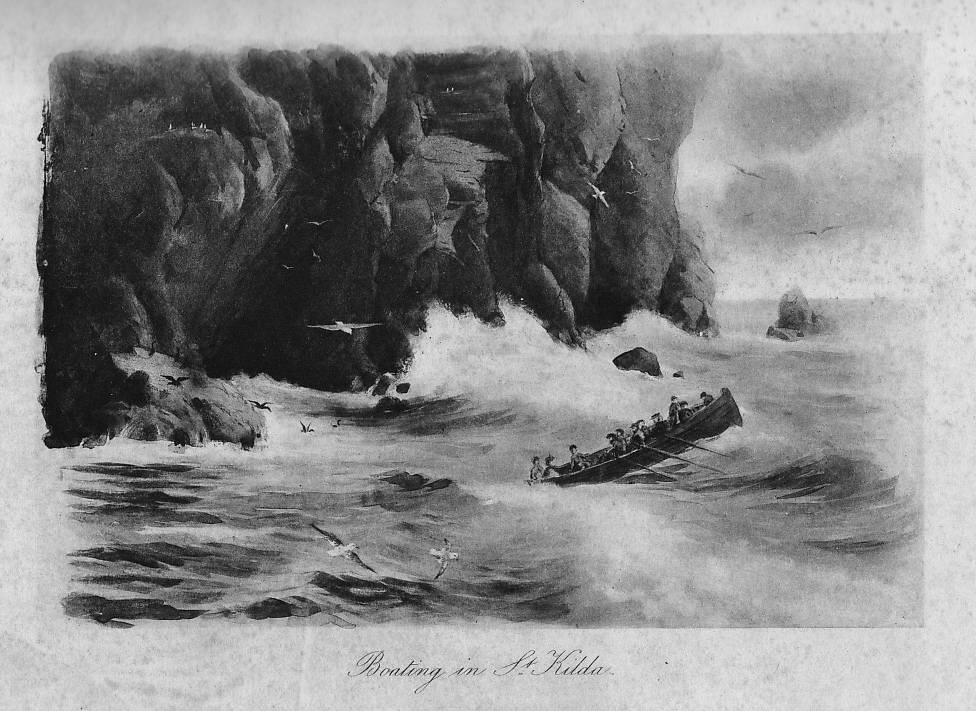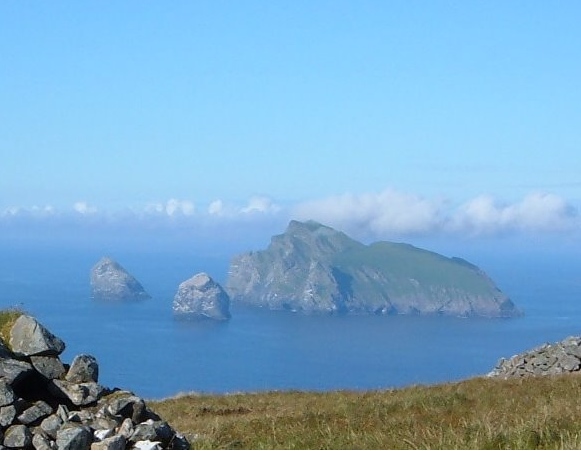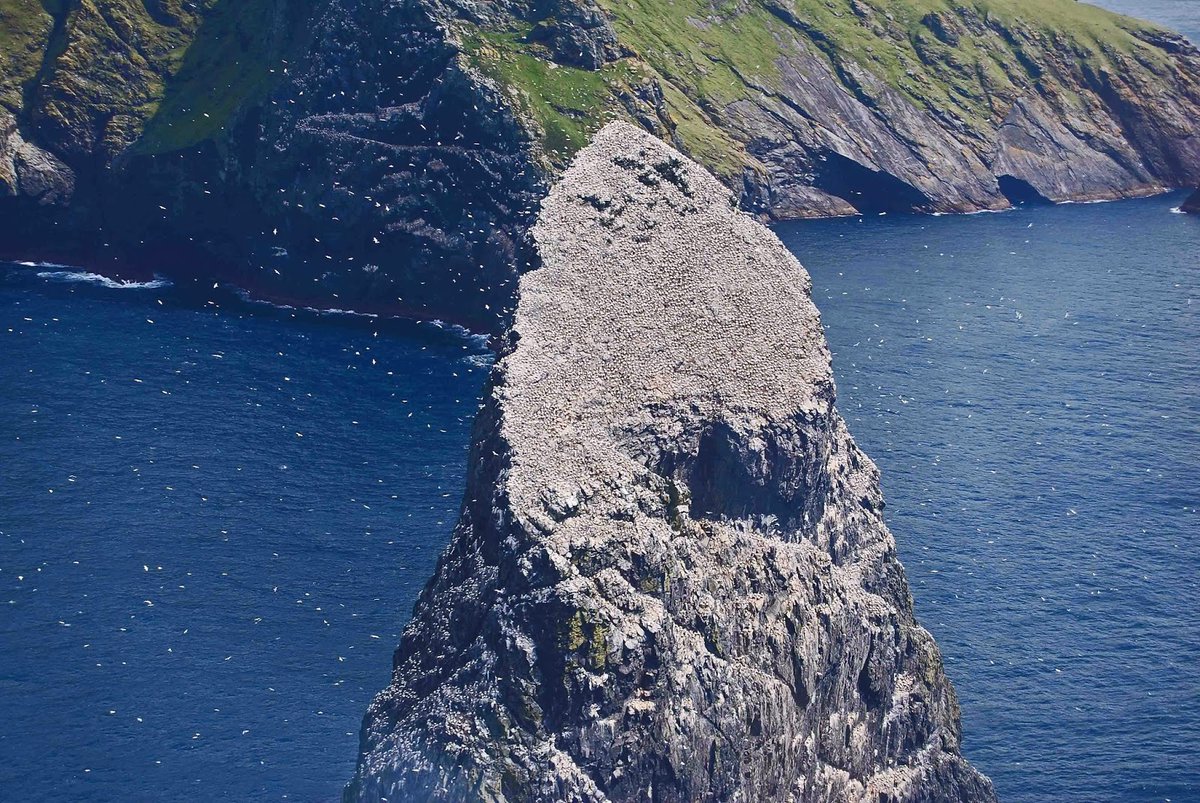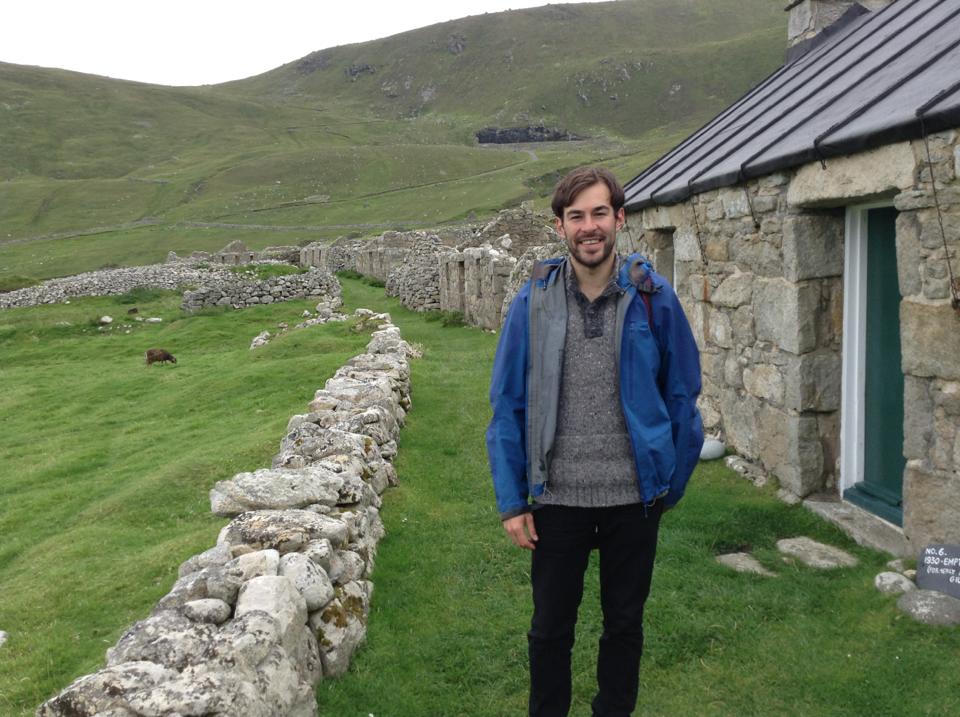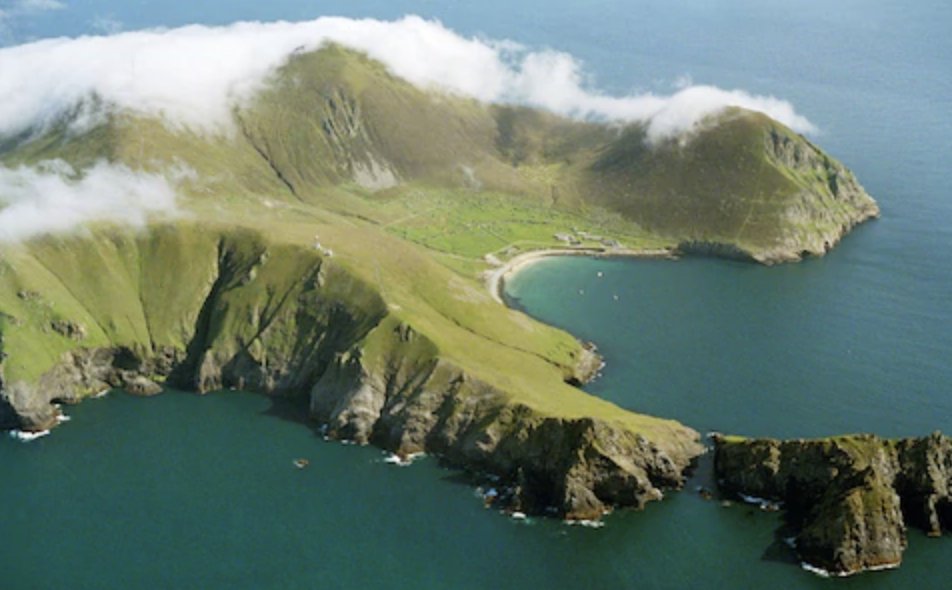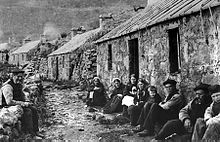A historical quarantine thread for all those suffering cabin fever at the moment:
My great-gran came from the most isolated community in the UK, the St Kilda archipelago in the North Atlantic, which has been inhabited for millennia but is so isolated the community that lived there was evacuated in 1930. The location is now a UNESCO Dual World Heritage Site.
St Kilda is 40 miles into the North Atlantic from the Outer Hebrides and it takes a few hours to get there via boat, often in very rough waters with large swells that cause sea sickness.
The main source of food there was surprisingly not fish, but birds. They would repel down and climb up the highest sea-cliffs in Britain (427 m) to capture birds and eggs for food and to pay taxes—they exchanged oils and feathers as tax payment.
The two main sea stacs they fowled (hunted birds) on were Stac-an-Armin (196 m) and Stac Lee (165 m). The two tallest sea stacs in Britain and home to the world’s largest gannet colony. The white stuff on the rock is bird poop.
So, in the autumn of 1727 when the population would have been roughly 120 a group of 3 men and 8 boys were rowed out to Stac-an-Armin for what was meant to be a 2 week hunt during which they lived in a tiny bothy on the stac. The bothy and boat landing would have looked like this
At the end of the two weeks in cold and bitter conditions on top of the tallest sea stac in the middle of the North Atlantic they waited for the boat to return for them but it didn’t come. Here you can see the two stacs and Isle of Boreray from the Isle of Hirta where they lived
They would have been able to see there home island on most days. And would have been able to see signals to them had anyone climbed to the peaks of Hirta—but there was nothing. They had been left there and had no clue why. Stac-an-Armin and a pic of St Kildan fowlers.
What happened was this. Just after the hunting party had been dropped via rowboat on the stac the clothes of the islander Donald MacDonald (most Scottish name ever) who had died from small pox were returned to the village to be given to his wife. Me w/ my ancestral home behind me
The ensuing outbreak decimated the population and left them unable to retrieve the hunters who were still on Stac-an-Armin....
But the hunters survived. They spent the entire winter living on the Stac in frigid conditions, living off the birds they had hunted, and on May 13, 1728, when the tax collector arrived to collect taxes the 3 men and eight boys were spotted and retrieved.
Sadly, they would then return to find that 94 members of their village had passed away, leaving only themselves, 1 man, and eighteen children alive.
So, I know it sucks being in quarantine, social distancing and sitting at home, but at least we’re not atop a sea stac eating raw gannets in the middle of the Atlantic Ocean right now. Thank you @StKildaNTS for taking care of St Kilda and thank you @NHSuk for taking care of us.
Thank you also to Mary Harman and her wonderful research on St Kilda. #coronavirusuk #coronalockdownuk #NHSheroes

 Read on Twitter
Read on Twitter